The Differences between Testing in Traditional and Agile Approaches Testers must understand the differences between testing in traditional lifecycle models (e.g., sequential such as the V-model or iterative such as RUP) and Agile lifecycles in order to work effectively and efficiently. The Agile models differ in terms of the way testing and development activities are […]
Read MoreLean Software Development Principles Lean development can be summarized by seven principles, very close in concept to lean manufacturing principles: Eliminate waste Amplify learning Decide as late as possible Deliver as fast as possible Empower the team Build Quality in See the whole Eliminate waste Lean philosophy regards everything not adding value to the customer […]
Read MoreKanban is a visual process and project management tool first developed in Japan by Toyota. Kanban is a way to visualize your work and limit the amount of work in progress at any one time. KanBan is often seen as a central element of “Lean” manufacturing and is probably the most widely used type of […]
Read MoreExtreme Programming (XP) Extreme Programming (XP) is a software development methodology which is intended to improve software quality and responsiveness to changing customer requirements. As a type of agile software development, it advocates frequent “releases” in short development cycles, which is intended to improve productivity and introduce checkpoints at which new customer requirements can be […]
Read MoreThe User Story is the most granular unit of requirement on a Scrum Project. The Product Owner writes the User Stories. The Sprint Backlog gets elaborated into User Stories when the Sprint Planning is done. It is important to note that the user story is a medium that helps in Gathering basic information about requirements Records high level […]
Read MoreDone Criteria are a set of rules that are applicable to all User Stories. A clear definition of Done is critical because it removes ambiguity from requirements and helps the team adhere to mandatory quality norms. This clear definition is used to create the Done Criteria when a Prioritized Product Backlog is prepared. A User Story is considered […]
Read MoreAnybody who has a complex project can benefit from using Scrum. Prioritize large to-do lists into manageable tasks with improved teamwork, better communication, and faster results. Scrum has streamlined software development — and professionals from around the world are starting to see the value of using Scrum. Of all the possible Agile frameworks used by […]
Read MoreScrum is an iterative and incremental Agile software development framework for managing software projects and product or application development. Its focus is on “a flexible, holistic product development strategy where a development team works as a unit to reach a common goal” as opposed to a “traditional, sequential approach”. Scrum enables the creation of self-organizing teams […]
Read MoreWomack, Jones and Roos published two successful books entitled “the machine that changed the world” (1990) and Lean thinking (1996). Both books address the revolutions in manufacturing represented by the Toyota production system of the Toyota Corporation of Japan. They compared this way of working with the traditional mass production system that was used by […]
Read MoreWhen one thinks about project development methodologies, the first thing that comes to our mind are the Agile software development methodology described in PMBOK® guide or PRINCE2® Manual. Therefore a question always arises in our minds, is another methodology really required? What is agile methodology? The answer to this question lies in the fact that […]
Read More